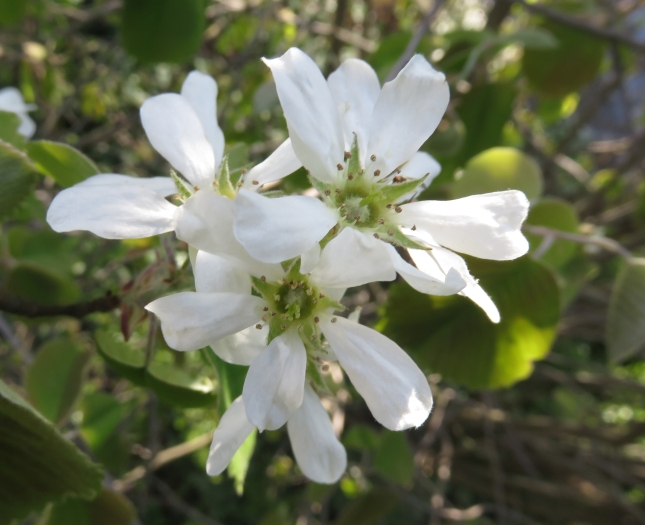Wiegand’s Shadbush
(Amelanchier interior)
Wiegand’s Shadbush (Amelanchier interior)
/
/

Alex Hauner
CC BY-SA 4.0
Image By:
Alex Hauner
Recorded By:
Copyright:
CC BY-SA 4.0
Copyright Notice:
Photo by: Alex Hauner | License Type: CC BY-SA 4.0 | License URL: https://creativecommons.org/licenses/by-sa/4.0 | Uploader: Alex z Plzně | Publisher: Wikimedia Commons | Title: Amelanchier_wiegandii_-_blossoms_-_2.jpg | Notes: |




Estimated Native Range
Summary
Amelanchier interior, commonly known as Wiegand’s shadbush, is a deciduous shrub native to North America, particularly found in forest edges, open woodlands, and along streams. It typically reaches up to 9 meters in height and is known for its multi-stemmed, clump-forming habit. The leaves are simple and oval with fine toothed margins, turning to attractive shades of yellow to red in the fall. Wiegand’s shadbush produces showy white flowers in early spring, followed by sweet, edible pomes that mature to a dark purple-black color in early summer. The fruit is relished by both humans and wildlife.
The plant is valued for its ornamental qualities, including its spring blossoms and fall foliage. It is used in naturalized plantings, as a specimen in residential gardens, and for wildlife habitat restoration. Wiegand’s shadbush is adaptable to a range of soil types, from light sandy to heavy clay, and pH levels from acidic to alkaline. It thrives in full sun to partial shade and requires moist soil conditions. While it is generally low-maintenance, it can be susceptible to rust and fire blight. It is not known for aggressive roots or significant disease problems, making it a reliable choice for gardeners.CC BY-SA 4.0
The plant is valued for its ornamental qualities, including its spring blossoms and fall foliage. It is used in naturalized plantings, as a specimen in residential gardens, and for wildlife habitat restoration. Wiegand’s shadbush is adaptable to a range of soil types, from light sandy to heavy clay, and pH levels from acidic to alkaline. It thrives in full sun to partial shade and requires moist soil conditions. While it is generally low-maintenance, it can be susceptible to rust and fire blight. It is not known for aggressive roots or significant disease problems, making it a reliable choice for gardeners.CC BY-SA 4.0
Plant Description
- Plant Type: Tree, Shrub
- Height: 15-25 feet
- Width: 15-20 feet
- Growth Rate: Moderate
- Flower Color: White
- Flowering Season: Spring
- Leaf Retention: Deciduous
Growth Requirements
- Sun: Full Sun, Part Shade
- Water: Medium
- Drainage: Slow, Medium, Fast
Common Uses
Bee Garden, Bird Garden, Butterfly Garden, Deer Resistant, Edible*Disclaimer: Easyscape's listed plant edibility is for informational use. Always verify the safety and proper identification of any plant before consumption., Hummingbird Garden, Low Maintenance, Showy Flowers
Natural Habitat
Native to forest edges, open woodlands, and along streams in North America
Other Names
Common Names: Wiegand’s Shadbush, Juneberry, Pacific Serviceberry, Amélanchier De L’Intérieur
Scientific Names: , Amelanchier interior, Amelanchier ×wiegandii,
GBIF Accepted Name: Amelanchier interior Nielsen